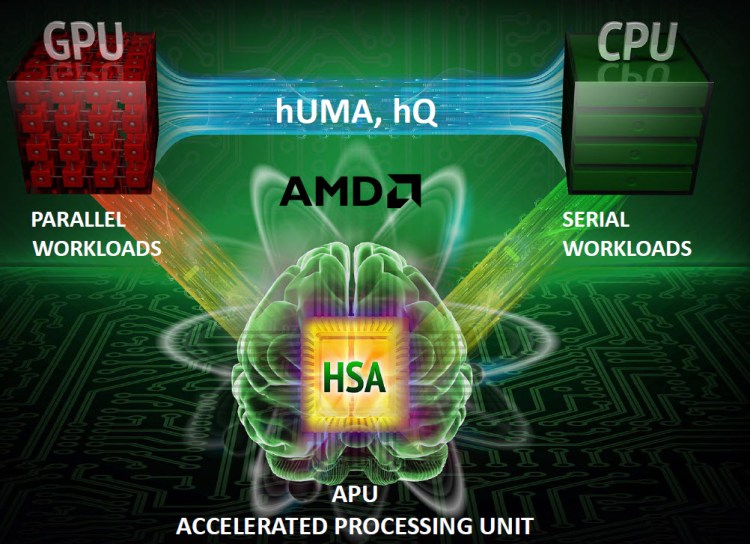Advanced Micro Devices said that it has created a new design for processing data that will generate much better performance for a whole new generation of electronic devices. AMD has the backing of a whole consortium of other chip and system makers, but its rivals Nvidia and Intel haven’t gone along yet.
The Heterogenous Systems Architecture (HSA) is pretty arcane technical material for consumers, but if it takes off, AMD says it will lead to faster and more power-efficient personal computers, tablets, smartphones and cloud servers. It goes hand-in-hand with hUMA, a new way for processors to access the memory inside an Accelerated Processing Unit, or a single chip that combines both a microprocessor and graphics.
The problem is that it isn’t easy for programmers to harness the power of the GPU, or graphics processing unit, inside an APU. The HSA has been designed to fix this problem, making graphics an equal partner with the CPU (central processing unit) and other processors, such as a digital signal processor, inside a computing system.
All of this functions used to be part of separate chips. But now they can be packaged inside the same system-on-chip, or SoC, on the same piece of silicon. The three different kinds of processors access data in different ways, but AMD wants to change and simplify that.
GPUs can be used for non-graphics computing tasks, but it often takes too long to route requests for data through a CPU. Most developers don’t want to deal with the difficulty of optimizing their code for this kind of work. But a new technique, dubbed “heterogenous queuing,” allows applications to directly communicate with the GPU, treating it as an equal partner along side a CPU when it comes to accessing data quickly. That means an application won’t have to wait for the CPU when what it really needs to is to access the GPU.
With HSA and heterogenous queuing, the GPU doesn’t have to wait for the CPU to feed it data. It can spawn its own tasks on its own.
Nathan Brookwood, an analyst at Insight 64, calls this change the “same kind of conceptual breakthrough that the introduction of the virtual memory wrought in the 1970s,” when engineers figured out a better way to manage memory in a computer.
To date, programmers have been unable to harness the whole power of an APU. But with heterogenous queuing and HSA, AMD says that it will be easier to better utilize the system’s resources, improving computing for a variety of tasks. It will be useful in gaming, natural user interfaces, accelerated video and image editing, and accelerated media playback. These kinds of tasks place far more stress on the system than previous kinds of computing tasks.
Intel and Nvidia haven’t supported HSA. But AMD has recruited a number of allies, including Imagination Technologies, ARM, Samsung, Mediatek, Qualcomm, and Texas Instruments.
VentureBeat's mission is to be a digital town square for technical decision-makers to gain knowledge about transformative enterprise technology and transact. Learn More


